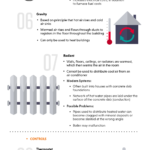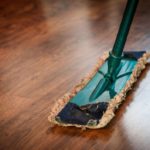Winterizing your home is extremely important because it cuts energy use and costs and can help you and your family stay safe and warm during the long, cold months of winter. However, many homeowners don’t know where to start, or have trouble figuring out which projects to tackle first. The most important projects are those that will save you money while keeping your home safe from winter’s ravaging winds and temperatures, and many of them are easy to do.
Here are a few of the best ways to winterize your home and save money.
Ceiling fans
When the winter months come knocking, check your ceiling fans. Most of them come equipped with a switch that will allow you to change the airflow direction, meaning running it in reverse will pull warm air down from the ceiling. This can cut your heating costs by about ten percent, making it a quick, easy project that will show real results.
Clean those filters
Air filters can get dirty fast, especially in the furnace. Check and replace them often in winter months to keep airflow steady and to keep your furnace from kicking on needlessly and running at a high demand.
Replace windows and doors
If you can feel a cold breeze coming through the cracks around your windows and doors, it might be time to consider replacing them. Storm windows will help seal in warm air, keeping you from paying outrageous heating bills during winter months. Storm doors can also help save you money and will give you the extra benefit of allowing light and solar heat into your home.
Consider smart technology
Setting the thermostat at a lower temperature can help save you quite a bit of money during colder months, especially when you’re not home. It may be a little cooler when you return, but it will be worth it in the long run. Consider installing a “smart” thermostat that allows you to program the temperature from anywhere with a remote.
Clean the gutters
Making sure the gutters on your home are free of debris and leaves will ensure that water can flow freely rather than pool up and freeze, which can cause myriad problems in winter months.
Check your water heater
Before the coldest months hit, flush your water heater to remove any sediment that might hinder the heater’s ability to work up to its potential. Then, lower the temperature to make sure it won’t heat the water too much. 120 degrees is just about perfect, and will keep your heater from working overtime.
Don’t Forget the Pool
To get your pool ready for the winter, start by closing it and adjusting the pH to the appropriate level, adjusting water hardness to the proper level of calcium, adjusting alkalinity and chlorine, and then cleaning and storing equipment. Don’t forget to clean the pool filtration system.







